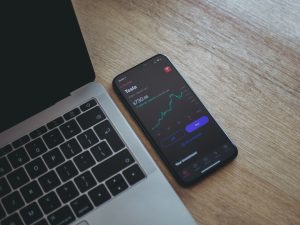Forex trading is a complex and dynamic market that requires a lot of research, skill, and knowledge to succeed. One of the challenges that traders face is slippage, which is a phenomenon that occurs when the price of a currency changes from the expected price at the time of execution of a trade. In this article, we will explain what slippage is, how it affects forex traders, and how to manage it.
What is Slippage in Forex?
Slippage is a term used to describe the difference between the expected price of a trade and the actual price at which the trade is executed. It occurs when there is a delay in the execution of a trade, or when the market moves quickly between the time a trader places an order and the time it is executed. This can result in a higher or lower price than what the trader intended, and can be either positive or negative.
Slippage can be caused by a variety of factors, including market volatility, low liquidity, poor execution speed, and order size. When there is a sudden surge in trading activity, the market can move quickly, causing prices to fluctuate rapidly. This can make it difficult for traders to execute trades at the desired price, resulting in slippage.
How Slippage Affects Forex Traders
Slippage can have a significant impact on forex traders, particularly those who rely on short-term trading strategies or trade large volumes. When slippage occurs, traders may not be able to enter or exit trades at the desired price, which can lead to losses or missed opportunities.
For example, if a trader places a buy order for EUR/USD at 1.1000, but due to slippage the trade is executed at 1.1010, the trader will have paid more for the currency than they intended. This can result in a loss if the price of EUR/USD subsequently falls. Similarly, if a trader places a sell order for EUR/USD at 1.1000, but due to slippage the trade is executed at 1.0990, the trader will have received less for the currency than they intended. This can result in a loss if the price of EUR/USD subsequently rises.
Slippage can also affect traders who use automated trading systems, as these systems rely on precise execution of trades at predetermined price levels. If slippage occurs, it can disrupt the trading system and result in unexpected outcomes.
How to Manage Slippage in Forex
While slippage is a common occurrence in forex trading, there are several strategies that traders can use to manage it. One of the most effective ways to reduce slippage is to use limit orders, which allow traders to set a specific price at which they want to enter or exit a trade. This can help to ensure that trades are executed at the desired price, and can reduce the impact of slippage.
Another strategy is to avoid trading during periods of high volatility or low liquidity, as these conditions can increase the likelihood of slippage. Traders should also be aware of the size of their orders, as larger orders can be more difficult to execute at the desired price.
Finally, traders can work with a reputable forex broker that offers fast and reliable execution of trades. A good broker will have advanced technology and infrastructure in place to minimize slippage and ensure that trades are executed quickly and accurately.
In conclusion, slippage is a natural part of forex trading that can have a significant impact on traders. While it cannot be completely eliminated, traders can use various strategies to manage slippage and minimize its impact. By using limit orders, avoiding trading during periods of high volatility or low liquidity, and working with a reputable broker, traders can increase their chances of success in the forex market.






